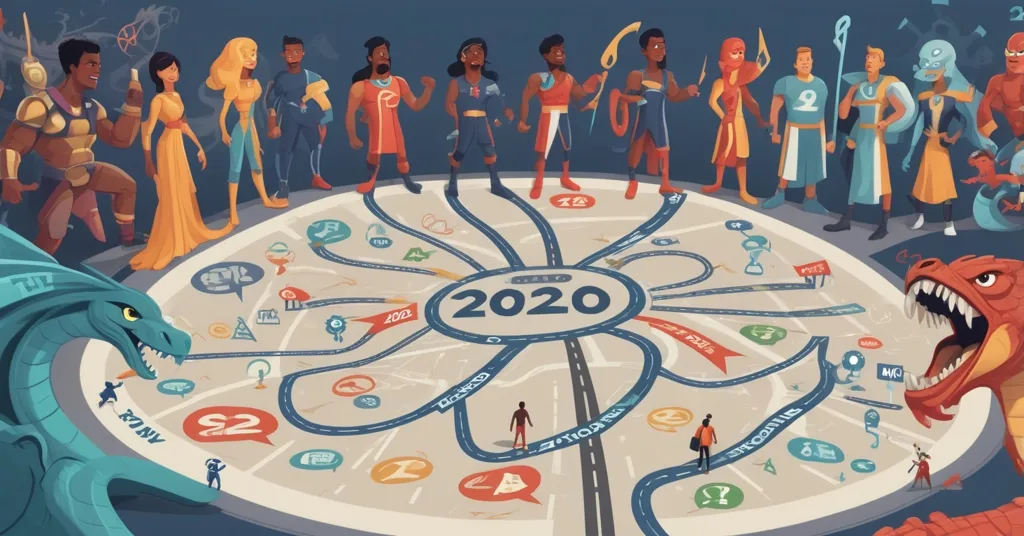Charles Hoskinson Claims Cardano Roadmap Done by 2020, Sparks Debate

Charles Hoskinson Sparks Controversy Over Cardano’s Roadmap Completion
Charles Hoskinson, the visionary behind Cardano and CEO of Input Output Global (IOG), recently set off a firestorm within the Cardano community by declaring that the project’s initial roadmap was completed by the end of 2020. This bold claim has ignited a debate about the project’s direction, funding, and the very essence of its governance.
- Hoskinson claims Cardano’s roadmap completed by 2020
- IOG developing next-gen upgrades without guaranteed funding
- Community backlash over scalability and governance
The Roadmap Controversy
Charles Hoskinson’s assertion that Cardano’s initial roadmap was completed by the end of 2020 has stirred significant debate and skepticism within the Cardano community. The roadmap, a critical blueprint for the project’s development, was meant to guide Cardano towards robust scalability and widespread adoption. However, many in the community argue that these milestones are yet to be fully realized.
A community member expressed the prevailing sentiment, questioning the completion of the roadmap:
“I mean this respectfully: How was the contract completed if scaling wasn’t fully delivered as per the roadmap?”
This query reflects broader concerns about the pace of development and whether the project has truly achieved the goals set out in its roadmap.
While Hoskinson’s claim is bold, it’s important to understand what “completion” means in the context of blockchain projects. In the dynamic world of cryptocurrency, roadmaps are often living documents, subject to revisions and adjustments based on technological advancements and community feedback. Yet, for many Cardano enthusiasts, the lack of a fully scalable and adopted network suggests the roadmap is far from complete.
Next-Generation Upgrades
Since the alleged completion of the original roadmap, IOG has shifted focus to next-generation upgrades like Hydra and Leios. Hydra, akin to multiple checkout lines in a supermarket, aims to boost Cardano’s transaction capacity by enabling parallel processing. This means that instead of transactions being processed one at a time, they can be handled simultaneously, significantly increasing throughput. Leios, on the other hand, is designed to further enhance Cardano’s scalability by optimizing the network’s performance.
Despite the promise of these upgrades, they are being developed without guaranteed funding. Hoskinson attributes this to the community’s move towards decentralized decision-making, a shift that has sparked discussions about the project’s financial stability and development priorities. The ongoing work on Hydra and Leios, visible in active GitHub repositories with 303 stars and 89 forks for Hydra alone, underscores the community’s interest and involvement but also highlights the complexities of developing cutting-edge technology without assured financial backing.
Community Response and Governance
Hoskinson has proposed that future work on Cardano should be financed through on-chain treasury votes, a system where ADA holders can directly influence the direction of the project’s development. On-chain treasury votes are essentially a democratic process where the community decides how the funds should be allocated, reflecting Cardano’s ethos of decentralization. This proposal is part of a broader move towards community governance, a transition that has not been without its challenges.
The Cardano community’s response has been vocal and varied. Some appreciate the move towards greater decentralization, while others are frustrated by the perceived slow progress on critical upgrades. One Cardano enthusiast shared, “I’ve been part of this community since the beginning, and the roadmap completion feels premature to me.” This sentiment underscores the community’s desire for transparency and tangible progress.
Hoskinson’s critique of low-cost development bids has also added fuel to the fire. He stated firmly,
“…I’m also not going to lay off hundreds of employees and replace them with low-cost developers to compete with low-cost bids like most companies do. We are not a time and material firm. We build cryptocurrencies.”
This stance, while commendable for its commitment to quality, has sparked debate about the sustainability and ethics of Cardano’s development model. Hoskinson’s refusal to cut corners, akin to building a blockchain as sturdy as bedrock, resonates with many but also raises questions about the project’s long-term financial strategy.
The Future of Cardano
At the heart of this controversy is Cardano’s ongoing transition from a founder-led vision to a community-governed reality. This shift is emblematic of the broader challenges faced by blockchain projects striving to balance centralized development with decentralized governance. Hoskinson’s previous criticisms of the Cardano Foundation’s governance structure highlight the tension between different stakeholders in the Cardano ecosystem.
As Cardano continues to evolve, the community’s role in shaping its future becomes increasingly significant. The debate over the roadmap’s completion is not just about milestones and development timelines; it’s about the very soul of Cardano and its path forward in the competitive world of cryptocurrencies. The project’s push towards decentralized governance aligns with the principles of effective accelerationism, emphasizing rapid technological advancement and disruption. However, the journey is fraught with challenges, as the community navigates the complexities of funding, governance, and technological innovation.
From a Bitcoin maximalist perspective, Cardano’s developments might be seen as a necessary experiment in the broader blockchain ecosystem. While Bitcoin remains the gold standard of cryptocurrency, projects like Cardano are exploring niches that Bitcoin does not serve, such as smart contracts and decentralized governance. This diversity, while sometimes contentious, is vital for the overall advancement of blockchain technology.
Key Takeaways and Questions
- What did Charles Hoskinson claim about Cardano’s roadmap?
Charles Hoskinson claimed that Cardano’s initial roadmap was completed by the end of 2020.
- What are the next-generation upgrades IOG is working on?
IOG is working on next-generation upgrades like Hydra and Leios, aimed at improving Cardano’s scalability.
- How does Hoskinson suggest funding future work on Cardano?
Hoskinson suggests that future work should be financed through on-chain treasury votes.
- What criticism did Hoskinson receive from the Cardano community?
The Cardano community criticized Hoskinson’s claim of roadmap completion, questioning the project’s scalability and adoption.
- What is Hoskinson’s stance on low-cost development bids?
Hoskinson opposes low-cost development bids, stating that he will not lay off employees to compete with such bids and emphasizing that IOG builds cryptocurrencies, not time and material projects.
- What broader issues does the controversy highlight in Cardano’s development?
The controversy highlights issues of funding, governance, and the transition from founder-led to community-governed development in Cardano’s evolution.



